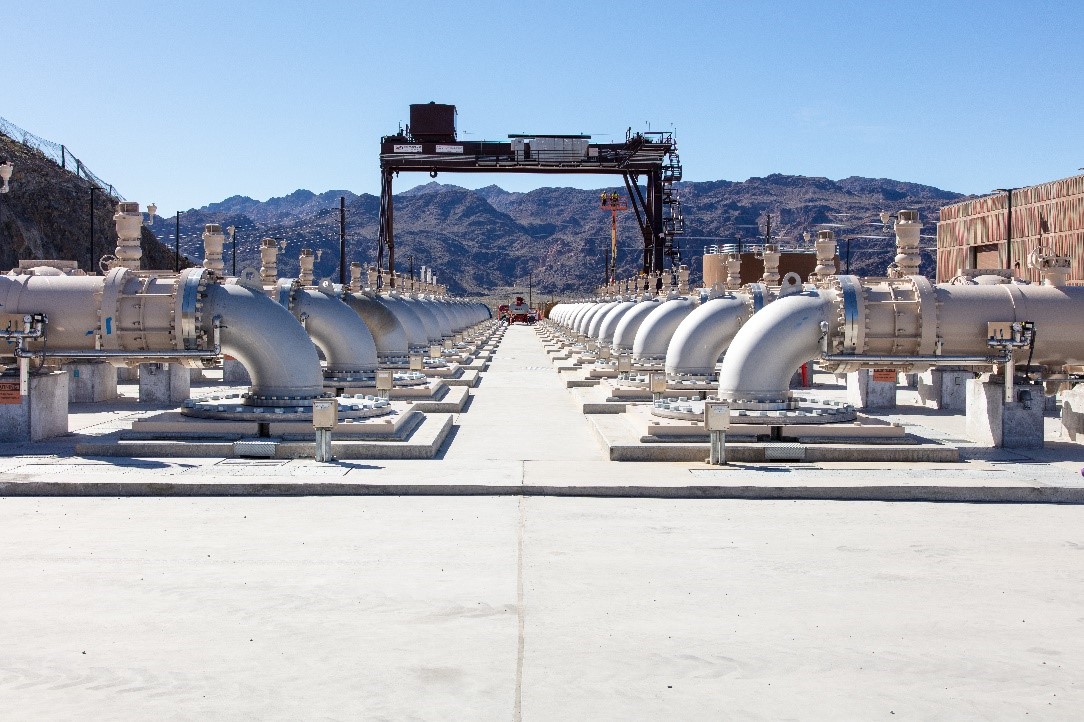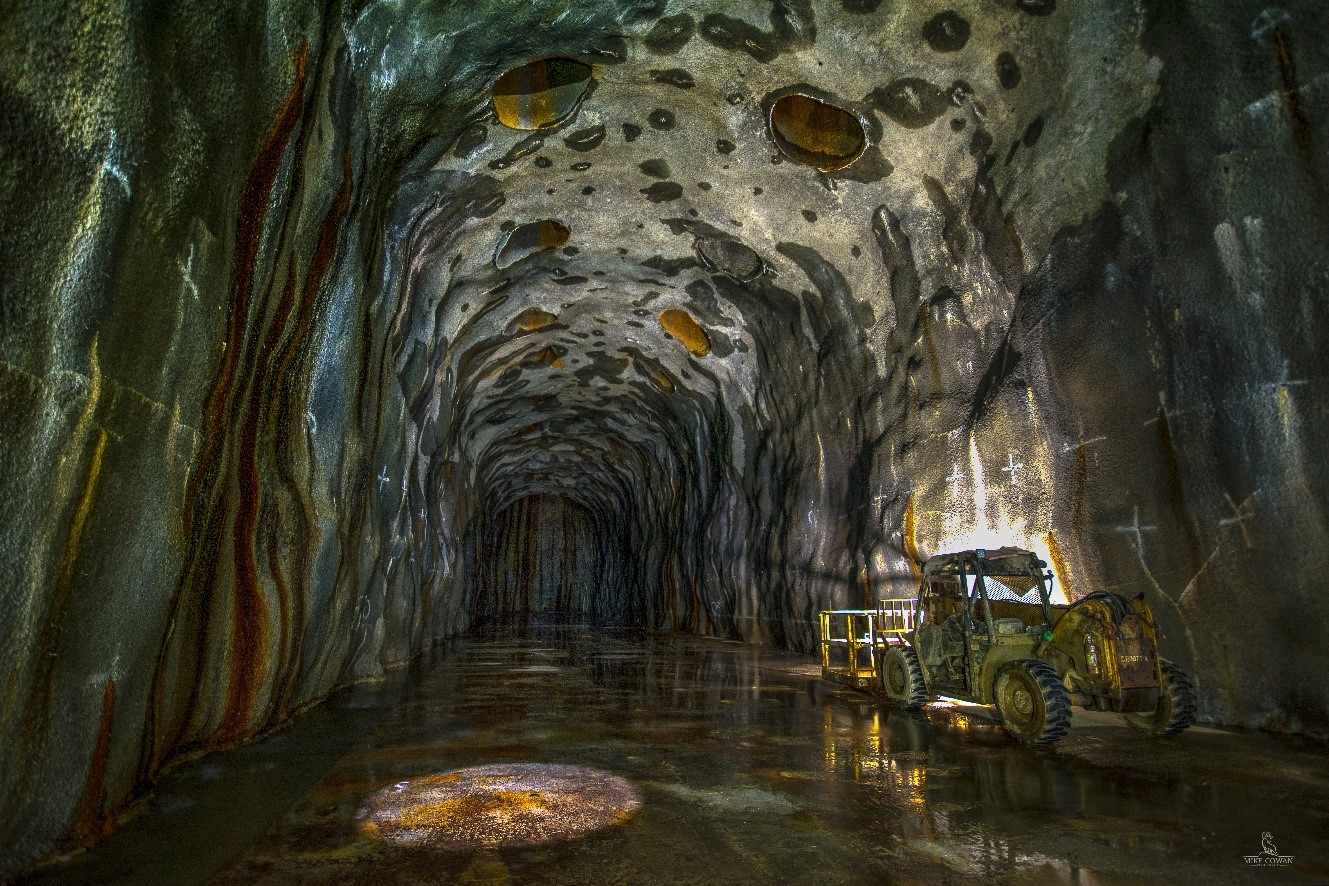

Smart investments can help communities weather tough times, so when drought conditions hit the Colorado River Basin in 2000, the Las Vegas Valley Water District (LVVWD) joined local water agencies to invest in forward-thinking plans and programs to protect Southern Nevada’s water supply.
Engineering a deep-water solution, the Southern Nevada Water Authority (SNWA) and its member agencies, including the LVVWD, initiated the engineering design and construction of a 24-foot diameter intake tunnel and Low Lake Level Pumping Station to ensure 2.2 million Southern Nevadans maintained access to their drinking water.
“Nearly all of the water delivered throughout the Las Vegas Valley comes from the Colorado River at Lake Mead,” said Dave Johnson, SNWA and LVVWD Deputy General Manager for Operations. “In response to this ongoing drought and water level reductions in Lake Mead, we implemented a number of initiatives to protect our water supply, including investing in the infrastructure that ensures continued access to our share of water in Lake Mead.”
Since the drought began, Lake Mead water levels have declined more than 130 feet. Additional declines in the lake’s level threatened the operation of the water agency’s two original intake pipes, which were installed in the early 1970s and early 2000s.
“We knew we had to build a deeper new intake and pumping station to protect access to our water supply,” Johnson said. Adding that water at greater depths is preferred from a water treatment standpoint, “The water is colder and cleaner at the deeper intake location we have chosen — it’s higher-quality water for us to treat and deliver throughout the community.”
The deep-water intake, known as Intake No. 3, stretches nearly three miles to one of the deepest points in Lake Mead, sitting nearly 200 feet below the lake’s surface. To pump water from these depths, SNWA also constructed the Low Lake Level Pumping Station, which became operational in April 2020. The pumping station includes 34 of the world’s largest submersible pumps that have a capacity to move more than 900 million gallons per day.
“With this infrastructure we can now access water from within the full elevation of the lake, regardless of the lake’s level. That’s important because even if Lake Mead drops below elevation 900 feet and Hoover Dam can no longer generate power or release water to states and users downstream, including Arizona, California and Mexico, we still will be able to provide water to the Las Vegas Valley,” Johnson explained.
With the ability to draw water from any lake level, Southern Nevada can confidently pursue partnerships to develop new water resources in exchange for access to additional Colorado River water. Pursuing the development of desalination or water reuse projects will allow SNWA and its member agencies to partner with other states on smart investments to develop new water resources in exchange for Southern Nevada receiving additional Colorado River water that can be accessed through the new intake and Low Lake Level Pumping Station. This certainty defers — and possibly eliminates – the need for SNWA to pipe and pump water from hundreds of miles away, providing greater flexibility to expand our community’s water supply in a smart, efficient and sustainable way.
SNWA recently entered into a Letter of Intent with the Metropolitan Water District of Southern California (MET) to partner on a major water recycling project. Currently, MET treats wastewater generated from indoor use and releases it to the ocean. A new water reuse facility would provide the infrastructure to treat and reuse the wastewater.
“This historic agreement would allow Southern Nevada to benefit by financially participating in the project and receive a significant amount of water in return, which we can treat and deliver through our existing infrastructure. This project will significantly enhance our water supply for the future,” Johnson explained.
SNWA continues to evaluate possible partnerships with California and Mexico to develop desalination facilities. Investing in desalination facilities could allow SNWA to acquire additional Colorado River water in the future.
“While Southern Nevada’s water agencies are working to address the challenges of the drought, we need everyone to do their part and conserve,” Johnson said. “Adhering to seasonal watering restrictions, removing unused grass and preventing water waste, stretches our water supply and protects our quality of life.”
It’s your water. Your investment. Use it wisely. For tips on how to save water, visit lvvwd.com.
Members of the editorial and news staff of the Las Vegas Review-Journal were not involved in the creation of this content.


